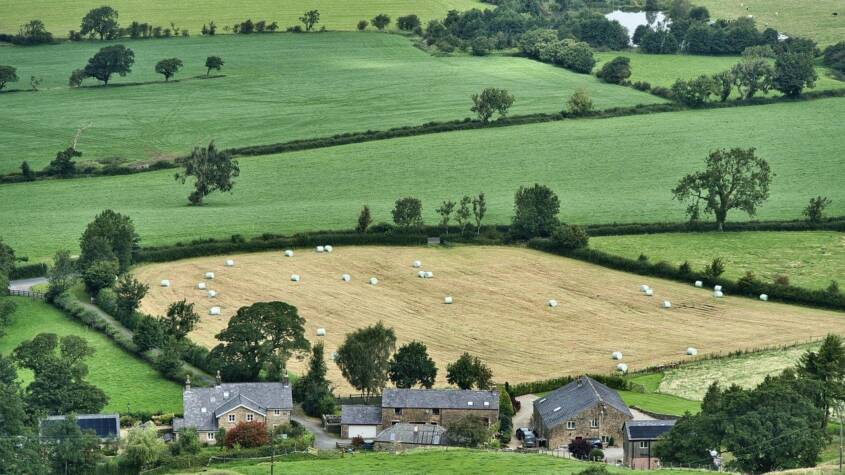Farms in Ontario: A Comprehensive Overview of Agriculture and Innovation
Farms in Ontario represent a vital part of the province’s economy and landscape. With diverse agricultural practices, Ontario farms produce a wide range of crops and livestock, making it one of Canada’s top agricultural regions. From vineyards to dairy farms, the variety showcases the province’s rich soil and favorable climate.
Visitors to Ontario will find farms that offer unique experiences, including agritourism activities. Many farms allow guests to engage in picking fruits, touring wineries, or learning about sustainable farming practices. These hands-on experiences not only educate the public about food sources but also foster a deeper connection to the land.
Throughout Ontario, the farming community thrives due to innovation and dedication. Local farmers are increasingly embracing technology and sustainability to enhance productivity and ensure the preservation of their land. This commitment to modern agriculture ensures that the province’s farms continue to play a crucial role in feeding both local and global populations.
History of Agriculture in Ontario
Agriculture in Ontario has evolved significantly from its early beginnings. The historical context of farming practices, policy development, and technological advancements highlights the region’s agricultural journey.
Early Farming Practices
The roots of agriculture in Ontario can be traced back to Indigenous peoples who practiced sustainable farming techniques. They cultivated crops like corn, beans, and squash, known as the “Three Sisters.” These crops thrived in Ontario’s rich soil and favorable climate.
With European settlement in the 17th century, agriculture expanded. Early European farmers introduced wheat, barley, and livestock. They utilized techniques from their homelands but adapted methods to suit the local environment. This period marked the transition from foraging to consistent agricultural practices, laying the groundwork for future growth.
Development of Agricultural Policies
As agriculture grew, so did the need for structured policies. In the 19th century, the provincial government took steps to support farmers through research and education. Initiatives like the Ontario Agricultural College, established in 1874, focused on improving farming techniques.
Legislation was also introduced to regulate land use and protect agricultural interests. These policies facilitated the establishment of co-operatives, empowering farmers and enhancing their market presence. This support system was vital in transforming Ontario into a leading agricultural producer.
Modernization and Technological Advances
The 20th century brought significant modernization to Ontario’s farms. The introduction of machinery, such as tractors and combines, drastically changed how farmers operated. This mechanization increased efficiency and output, allowing for larger scale operations.
Advancements in technology also included the use of fertilizers and pesticides, improving crop yields. Research institutions focused on plant breeding and disease management, further enhancing productivity. Today, Ontario remains at the forefront of agricultural innovation, utilizing precision farming technologies to optimize crop management and sustainability.
Current Landscape of Ontario Farms
Ontario’s agricultural landscape presents a diverse array of farming practices and structures that reflect the province’s rich soil and varied climate. Farms in Ontario contribute significantly to the local and national economy, showcasing both traditional and innovative approaches to farming.
Typical Farm Structure
Most Ontario farms are family-owned and operated, with many passed down through generations. Common structures include barns, silos, and specialized facilities for livestock and crops.
Farm sizes vary widely, with some operations covering thousands of acres while others are smaller, focusing on niche markets. Modern technology plays an essential role, enhancing productivity through precision agriculture techniques.
Infrastructure supporting these farms often includes access to roads, irrigation systems, and storage facilities, which are vital for transporting goods efficiently.
Main Crops and Livestock
Ontario is a major agricultural hub in Canada, producing a variety of crops and livestock. Key crops include corn, soybeans, and wheat, which thrive in the province’s fertile soil.
Additionally, Ontario is known for fruit and vegetable production, including apples, berries, and tomatoes. Livestock farming is equally important, with beef, poultry, and dairy being the leading sectors.
Aquaculture also contributes to the farming landscape, focusing on sustainable fish farming practices.
Organic and Sustainable Farming
The organic farming sector in Ontario has seen significant growth, with many producers adopting environmentally friendly practices. Organic farms must adhere to strict guidelines, which often include crop rotation and natural pest control methods.
Sustainable farming efforts also include the use of cover crops, reduced pesticide usage, and conservation agriculture. These practices aim to protect the environment while ensuring farm productivity.
Consumers’ interest in organic products drives demand, encouraging more farmers to explore these practices.
Economic Impact
Agriculture plays a crucial role in Ontario’s economy, contributing billions to the provincial GDP. The sector supports not only farmers but also a wide range of related industries, including food processing and retail.
In 2021, the gross farm gate receipts in Ontario were estimated to exceed $10 billion, demonstrating the sector’s significance. Employment in agriculture directly and indirectly supports thousands of jobs across the province.
Investments in technology and sustainability are poised to enhance productivity further, ensuring the continued economic viability of Ontario farms.
British Virgin Islands Company Registry Explained: Key Facts and Procedures
The British Virgin Islands company registry is a centralized system that maintains detaile…














